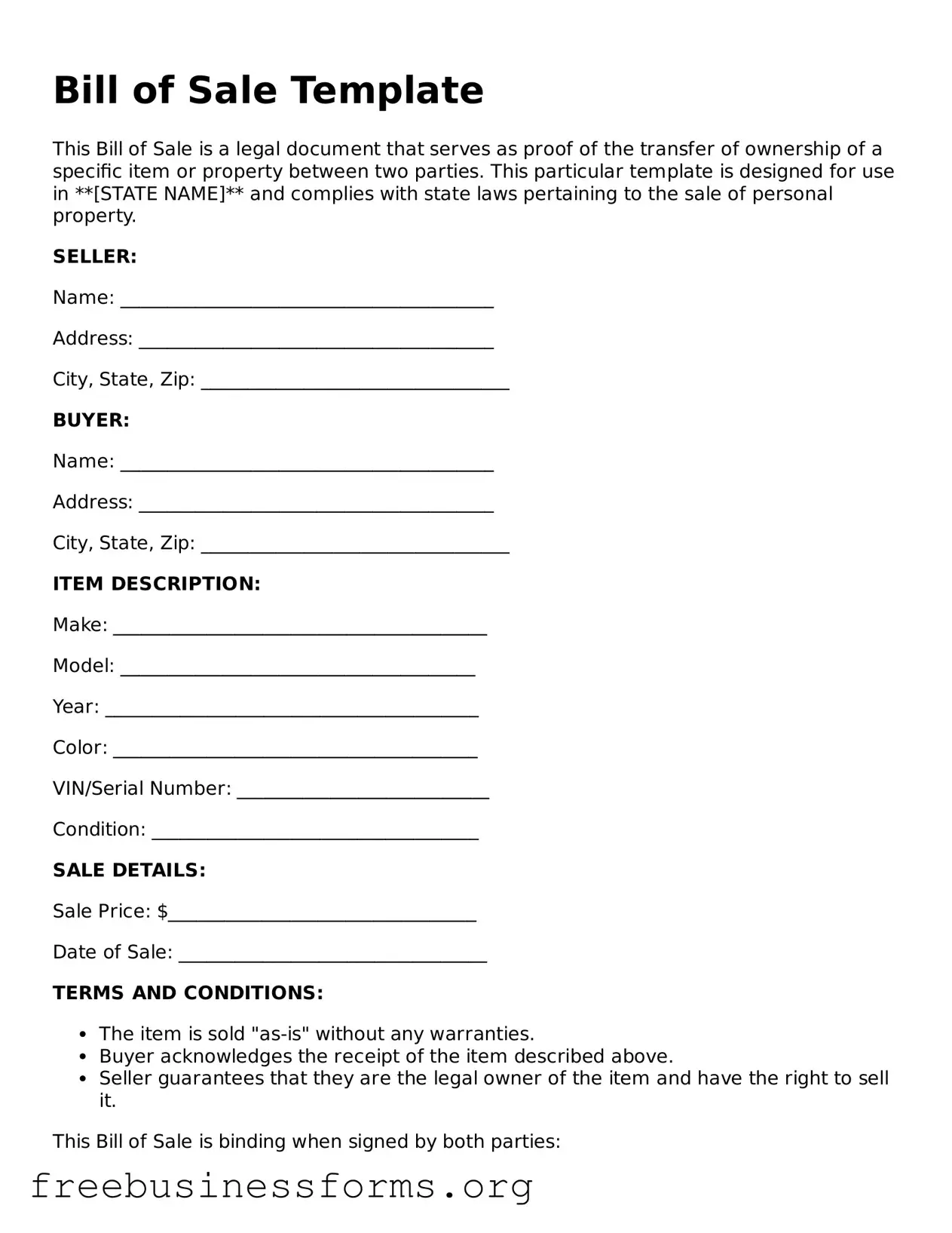Bill of Sale Template
This Bill of Sale is a legal document that serves as proof of the transfer of ownership of a specific item or property between two parties. This particular template is designed for use in **[STATE NAME]** and complies with state laws pertaining to the sale of personal property.
SELLER:
Name: ________________________________________
Address: ______________________________________
City, State, Zip: _________________________________
BUYER:
Name: ________________________________________
Address: ______________________________________
City, State, Zip: _________________________________
ITEM DESCRIPTION:
Make: ________________________________________
Model: ______________________________________
Year: ________________________________________
Color: _______________________________________
VIN/Serial Number: ___________________________
Condition: ___________________________________
SALE DETAILS:
Sale Price: $_________________________________
Date of Sale: _________________________________
TERMS AND CONDITIONS:
- The item is sold "as-is" without any warranties.
- Buyer acknowledges the receipt of the item described above.
- Seller guarantees that they are the legal owner of the item and have the right to sell it.
This Bill of Sale is binding when signed by both parties:
SELLER SIGNATURE: _______________________ Date: ______________
BUYER SIGNATURE: _______________________ Date: ______________
Both parties agree to the terms outlined in this Bill of Sale. For any disputes regarding this agreement, both parties must resolve the issue in accordance with the laws of **[STATE NAME]**.
